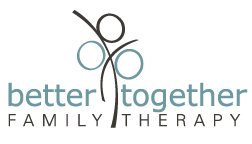SAD: When the ‘Winter Blues’ are Winter Blizzards
6 strategies to cope with Seasonal Affective Disorder (SAD) from a Maryland ADHD therapist
Winter is here. For some, winter is a season of snow, hot cocoa and coziness. For many others, winter means the return of their Seasonal Affective Disorder, or SAD. What many call “the Winter Blues” may actually be SAD, a depressive disorder linked to the change in seasons. Fatigue, depression, social withdrawal and a sense of hopelessness are all signs of SAD, which can feel like an emotional blizzard that will never stop. Fortunately, there are ways to treat SAD.
People with ADHD are more likely to experience SAD
Research has found that people with ADHD are more likely to experience symptoms of SAD. They may also notice an increase in their ADHD symptoms during the winter months. Inattention rises for people struggling with both SAD and ADHD, and motivation can be difficult to find. Memory and focus challenges become more pronounced.
Why do we get SAD?
A person’s circadian rhythm— the brain’s internal clock responsible for regulating alertness and sleepiness, among other functions— is heavily influenced by light and darkness. In winter, the body is exposed to less light, which disrupts the circadian rhythm. Less light also means less Vitamin D, which increases serotonin. All of these factors, in addition to environmental factors, hormonal fluctuations, genetics and other mental health struggles, can increase the severity of SAD.
Strategies to treat Seasonal Affective Disorder
Luckily, SAD can be treated effectively.
#1: Light Therapy to improve your mood
Light therapy mimics intense sunlight, spurring dopamine production and improving mood. Placing a 10,000 LUX lightbox (available online) in front of your face has been proven to improve symptoms of SAD quickly, with many reporting mood improvements within 3-6 days. Start slowly—15 minutes or so— and work up to 30-60 minutes a day. Consult a doctor first if you take ADHD medication or have bipolar disorder. Once you know you have SAD, you can begin to use the lightbox in late fall, as it is most effective when used at the onset of symptoms.
#2: Get Your Vitamin D
Vitamin D, or synthesized sunshine, is a vital nutrient that decreases in the dark days of winter. Vitamin D deficiency has been linked to depression, and SAD is no different. Fill your diet with foods fortified with Vitamin D, and take Vitamin D supplements.
#3 Exercise & Get Outside
It can be hard to motivate your body to move when SAD brings feelings of strong lethargy and even carb cravings (your body craves carbohydrates with SAD!) Your whole body wants to curl up in a ball, preferably with a loaf of bread. But moving your body every day— even a little— makes a tremendous difference in improving SAD symptoms. Try finding a walking buddy with whom you can talk and stroll. Go outside and play with your kids. Explore other creative ways to move.
#4: Remember it’s Seasonal
One of the most difficult aspects of depression is the feeling of hopelessness and inability to find any light at the end of the tunnel. If you struggle with SAD, remind yourself that it is cyclical and will— like the seasons themselves— change. Remember that just as Spring comes and snow melts, your Seasonal Affective Disorder WILL change with nature’s cycle. Reminding yourself that SAD is not a permanent state but one triggered by the seasons can help to alleviate anxiety around the condition.
#5: Get Out of Town
If possible, take a trip to a sunny location. Even a weekend away can boost mood and help to replenish your spirit. This may seem indulgent, but taking a trip to a sunny place is a way of prioritizing your mental health and getting the Vitamin D you need. Self-care is not selfish, and it is important to strengthen your own mental health. If it’s financially viable, giving yourself a sunshine-filled mini-break can be healing and rejuvenating.
#6: Get Help
One of the most powerful tools in combatting SAD is therapy. Cognitive Behavioral Therapy, or CBT, has been found to be the most effective modality in treating SAD. Therapists can help you process feelings, establish helpful habits, and move forward with hope. In addition, therapists partner to monitor symptoms and advise on anti-depressants, which are also extremely helpful in dealing with SAD.


